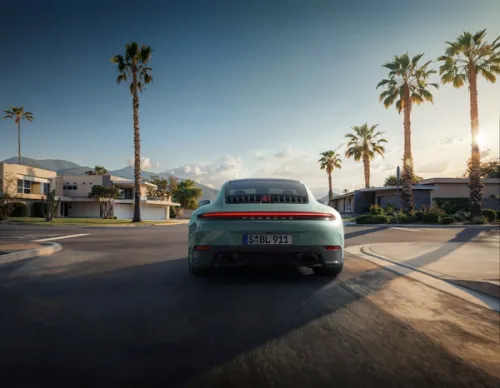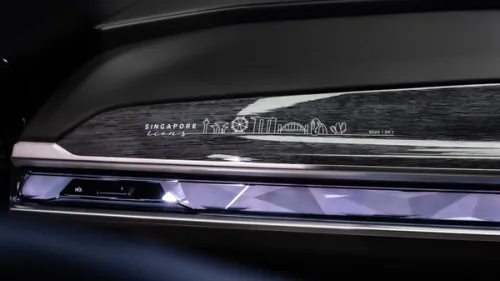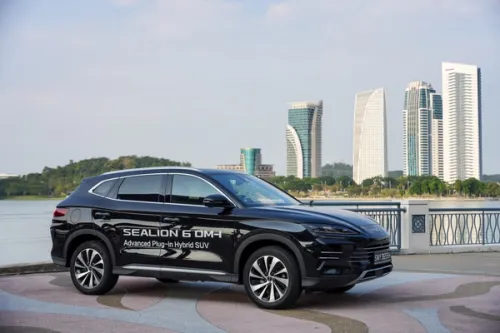Local News: Studies Shows Singapore How to Save 144 Million Litres of Petrol Per Year
The study which was carried out in Singapore is the first of its kind to correlate green sentiments of drivers in the city-state to their driving habits.

An astonishing 7.1 million tonnes of carbon dioxide (CO2) was estimated to have been emitted in to Singapore‟s atmosphere in 2010. Some 45% of this was emitted from passenger cars which accounts for 64%¹ of the total vehicle population recorded in Singapore for the same period.
The study commissioned by LANXESS revealed that while individual drivers were concerned about the environment and were undertaking measures within their homes to reduce carbon emission, their environmental concerns stopped short at home and didn‟t translate to their driving habits. The passivity on the part of the drivers was attributed to lack of information available to them on the positive environment impact through driving etiquette.
Some 86% of respondents cited the „energy labels‟ on electrical appliances as a primary guide when selecting a choice home appliance; however only 41.6% of respondents cited referring to external sources when selecting their car-parts i.e. tires.
With the pressing need for innovation and sustainable mobility that can protect the environment and our climate, Frost & Sullivan carried out the study that examined green habits of Singapore drivers.
Among the environmentally friendly technological breakthroughs in the automobile industry, „greener‟ substitutes for conventional tires were found to be the most applicable yet the least acknowledged by both end consumers and the industry itself.
As tires are one of the most frequently-replaced auto-parts over a car‟s driving cycle, 95% of respondents indicated that they would consult guidelines in the form of information labels when purchasing tires, should they be available.
Vivek Vaidya, Vice-President for the automotive and transportation division at Frost & Sullivan said, “According to our findings, over 70% drivers agreed that energy conservation and labeling were important in selecting environmentallyfriendly products. However, only some 6-7% of respondents were aware of any available measurements for road grip, noise or rolling resistance. About 90% of drivers surveyed agree that government regulated labeling for a wide range of products would increase usage of energy-efficient products.”
As per the study, „Green Tires‟ will see a national saving of 352,600 tonnes of CO2 (5% carbon reduction). Significantly, the conversion to „Green Tires‟ will also save 144 million liters of fuel annually² for the nation.
The findings of the study interestingly coincide with climate conservation efforts by the governments in Europe, the United States and South Korea.
Governments under the European Union have made headlines, with the
legislation for a mandatory tire labeling system. The legislation which will see labeled ratings on three categories – fuel efficiency, wet grip and noise level – will take effect from November 2012. The labeling scheme has been well commented on by industry watchers as consumer empowerment in making informed tire purchases.
Closer to home in South Korea, there too are plans to introduce compulsory labeling based on the EU-model in November 2012. In Japan, a voluntary obligation by the industry to label tires has been established since 2010. Similar schemes are currently being discussed in the United States and Brazil.
Christoph Kalla, Global Head of Marketing for the Performance Butadiene Rubber (PBR) business unit, LANXESS AG said, “Tires with an excellent performance profile in terms of rolling resistance, road grip, mileage and noise emissions are known as „Green Tires‟. More stringent emission standards are being placed worldwide, including in Singapore. Faced with soaring energy prices, both drivers and the automobile industry are feeling the crunch and are aware of the need for groundbreaking measures to fight the increase in carbon emissions. Green tires, moderate driving and appropriate tire pressure are practical, effective low-cost measures that can help reduce CO2 output and save on fuel costs without compromising on vehicle performance.”
By 2015, Singapore will become an important location for the tire industry.
Neodymium polybutadiene rubber (Nd-PBR) used in the treads and sidewalls of tires, is one of the key ingredients in „Green Tires‟ which helps reduce the energy consumption or rolling resistance of a tire. Nd-PBR also reduces abrasion, thus playing a significant role in making tires more durable.
LANXESS‟ investment in its second plant on Jurong island, will see the production of 140,000 metric tons per annum when in full operation. The plant which was announced in June 2011 is the largest Nd-PBR investment globally by LANXESS which already has its largest investment of €400 million – the butyl rubber plant – currently under construction at the same location.
The study which was carried out in Singapore is the first of its kind to correlate green sentiments of drivers in the city-state to their driving habits. Carried out over a period of nine weeks, a total of 250 drivers aged between 20 to 60 years of age participated. Of these, 30 were owners of hybrid cars
Credits: wilswong


Get the Best Price for your used car
from 500+ dealers in 24 hours

- Convenient and Hassle-Free
- Consumer Protection
Transparent Process
With No Obligation








